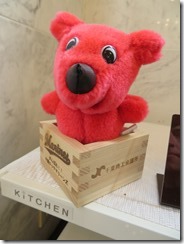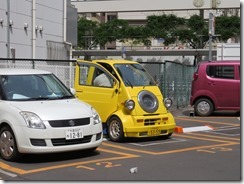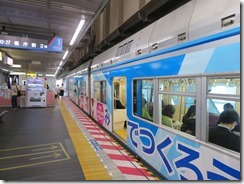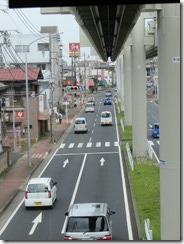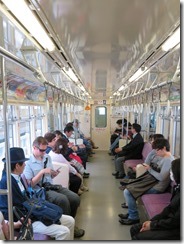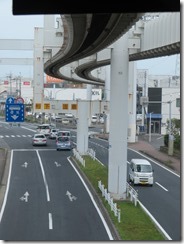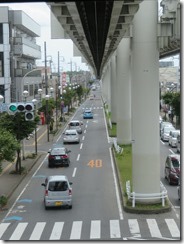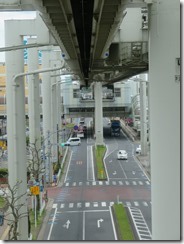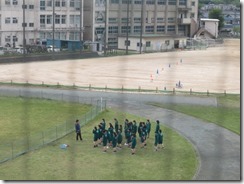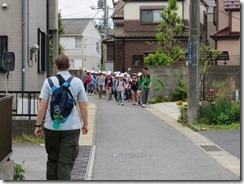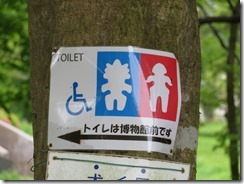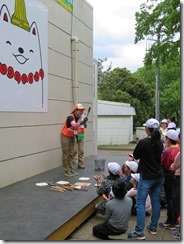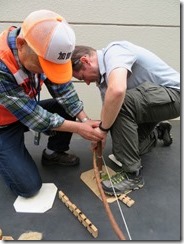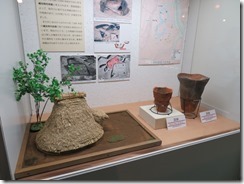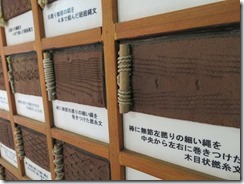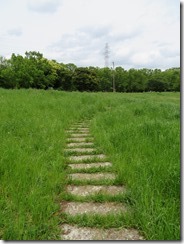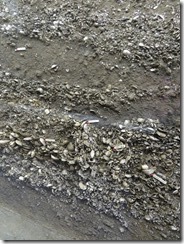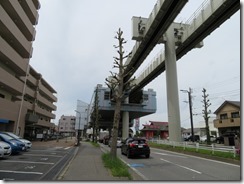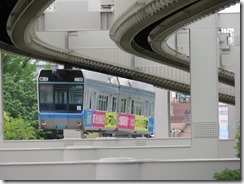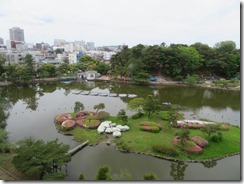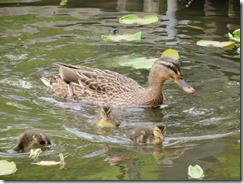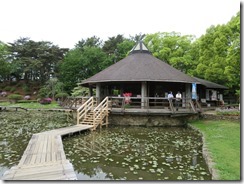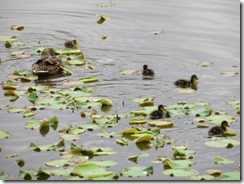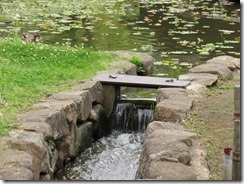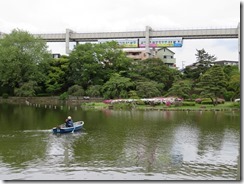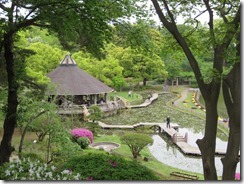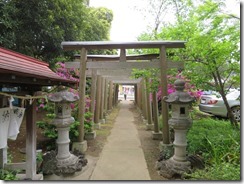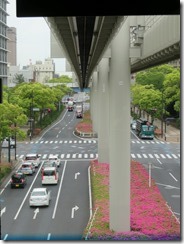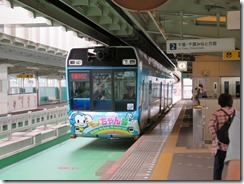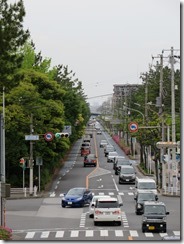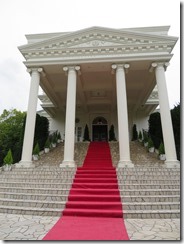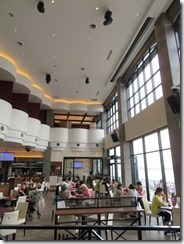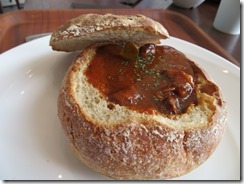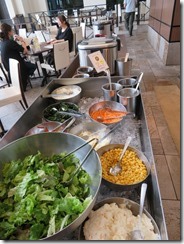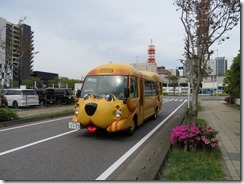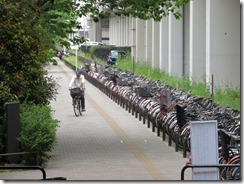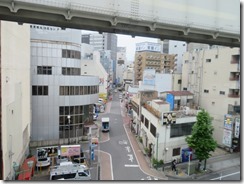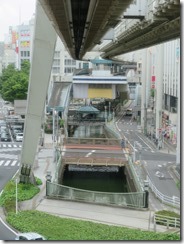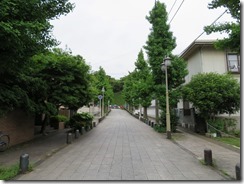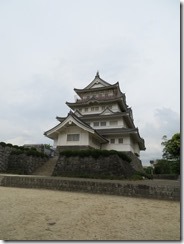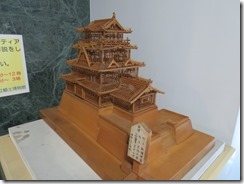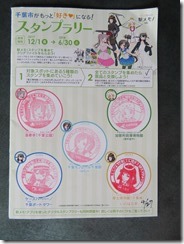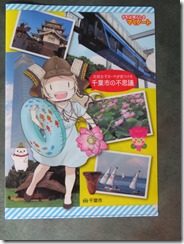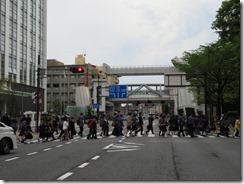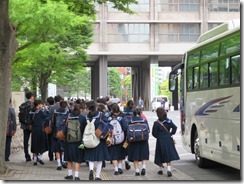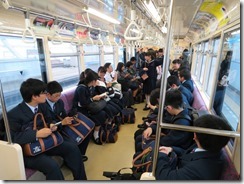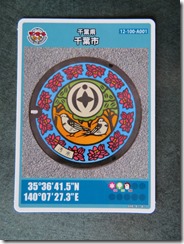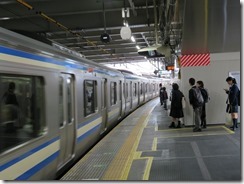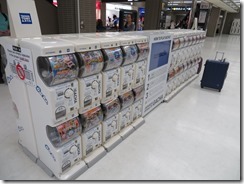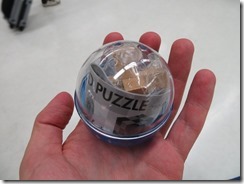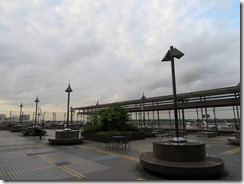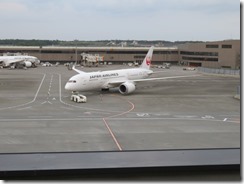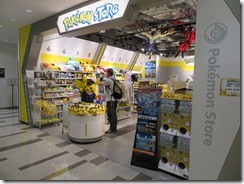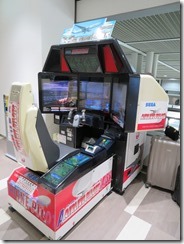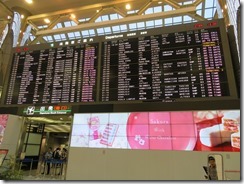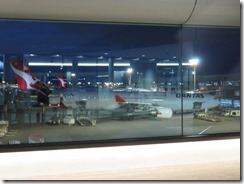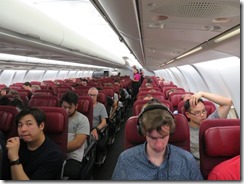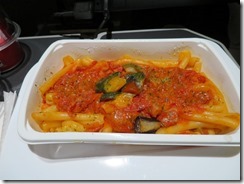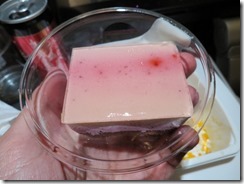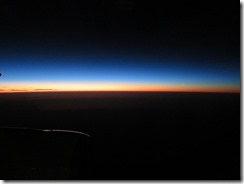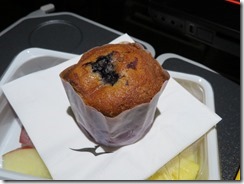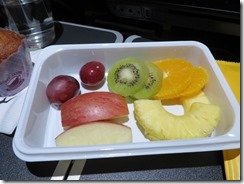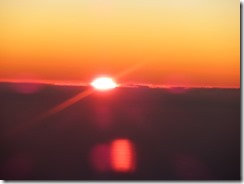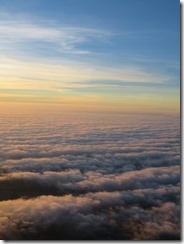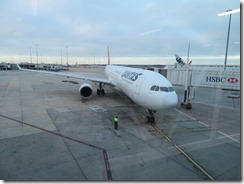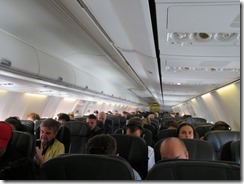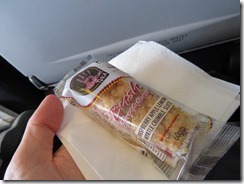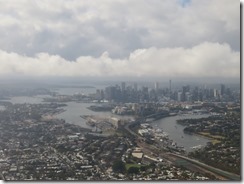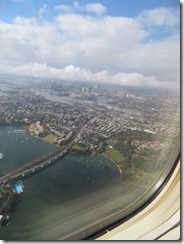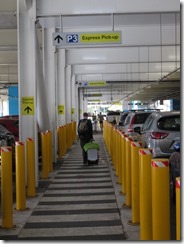Pretty much everything in Japan has a mascot of some description. Companies, monuments, cities, even entire prefectures. I find they seem to fall into two categories: cute girls, and cute blobs. The “cute girls” category is basically anime-style anthropomorphised representations of the thing that they’re the mascot of (the OS-tan girls that went around the internet a few years ago are the perfect example of this – they were fanart rather than official mascots, to be precise, but the principle is the same), while the “cute blobs” category is basically… a cute blob, with a face (Kumamon, who’s currently going around the internet, is the perfect example of this – he’s Kumamoto Prefecture’s mascot). I find that cute girls are more often used by entities that would advertise on TV or in print (like this, for example), while cute blobs more often as a guy in a costume in the real world (like this). We’ve encountered several of both examples over the course of our trips – I mentioned Koya-kun in Koya-san on our first trip, and Hikonyan in Hikone back in December – but today we met Chiba-kun (a pun on Chiba-ken, “Chiba Prefecture” in Japanese). He’s a big red dog, because the shape of Chiba Prefecture on a map just happens to resemble a dog in profile, standing on its hind legs.
Chiba City is the capital and most populous city in Chiba Prefecture, part of the Greater Tokyo Area. It curiously doesn’t appear to be a dormitory city for Tokyo to the same extent as Yokohama is, despite being just 40km from the city centre. It’s home to Chiba Port, one of the largest sea ports in the nation, and Futa, a red panda who became an internet sensation by standing on its hind legs for up to ten seconds at a time. Also, Narita Airport is found in Chiba Prefecture, which is why we decided to stay here for this portion of our trip.
So, once again we started with breakfast, then it was sadly time to do our final pack up and check out. We left our suitcases at the hotel, though, because we still had most of the day to do some sightseeing.
I mentioned during my brief visit here last December that the Chiba Urban Monorail appeared to be running at stamp rally to encourage visitors to travel the monorail and see the sights of Chiba, accompanied by a booklet illustrated by Swedish manga writer Åsa Ekström, so today that’s exactly what we decided to do. And, spoiler alert, this wound up being a really good plan, because each of our stops for a stamp resulted in an extremely pleasant surprise.
Since our JR Passes expired yesterday, there was no waste in spending all day on a private line, so we purchased a day pass and hopped aboard. (The day pass was actually pretty good value for money – cost us less than a trip to the end of the line and back.) Aside from the stamp at Chiba Station, there were four other stamps to acquire, and we had about five hours in which to do it, so we decided to head for the furthest one first. Though before we did that, we first decided to head right for the end of the line, just because we could. Hopped off and admired the station, then hopped back on again.
Our first stop was two stops back down the line, and then a fifteen-minute walk away – the Kasori Shell Mounds. Shell mounds are prehistoric midden heaps (which is to say, ancient rubbish dumps) consisting primarily of discarded shells. They exist all around the world – including in Australia – but the ones in Japan were the first to be discovered, and they seem to be the most numerous. The Kasori Shell Mounds are generally regarded as the largest in the world – they date from the Jomon Period, the earliest named period in Japanese prehistory, which covers the time from around 14,000 to 300 BC. (The name “Jomon” means “cord-marked” from a characteristic style from that period of decorating pottery by rolling ropes around it while still soft.)
As we approached, we found class groups of elementary school students walking away, and when we reached the Shell Mounds Museum building on the site, we found volunteer museum guides giving hands-on demonstrations to students of how to start a fire with a bow drill. When the demonstration was done, we were asked if we’d like to have a try too, and they were very excited to have us do so, taking photos of us to put on their website. (I’ve thus far not been able to find exactly where those photos were posted, though, if it’s even been done yet. One of them gave us his card so that we could find the site, but rather than a URL, it’s just got a search keywords.) One guide even told us (in English) “you’ve made my day”. We were, incidentally, both successful at starting fire, so now we’ll be able to survive in the wild.
Once we’d thanked the guides (and they’d thanked us), we headed inside the museum for a bit of stickybeak, finding the stamp for the monorail stamp rally at the back of the room. It was pretty much all in Japanese, so we mostly just glanced at the pictures. One part had a demonstration of how the Jomon-style patterned pottery was made, and how different styles of cord wrapping produced different patterns. We picked up some flyers at the museum, and after we’d left, I realised that one of them said that the museum cost “a small entrance fee” whoops.
We then headed to look at the shell mounds themselves. The southern mound has a channel dug through the middle for archaeological investigation, and then roofed over so that visitors can walk through and see the layers of shells and dirt in cross section. At least, that was the theory – James thought the actual shells we could see were a fake veneer, but I wasn’t so sure.
Though the site had another mound to look at, and a reconstruction of an Edo period house, we decided it was time to move to our next destination, since we were on the clock, so we headed back to the monorail station. I found it a little weird how being inside the station felt just like being inside any other station, even though it was basically a big room suspended on pillars over a roadway. This monorail has so much infrastructure – as I mentioned last time, it’s the world’s longest suspended monorail. It’s really useful, but I can only imagine the fuss they’d make in Sydney if anyone tried to install something similar, especially considering the fuss that got made over the dinky little one we used to have.
In any case, the next stamp was at Chiba Park, most of the way back towards Chiba Station. We hopped off the monorail and headed inside, walking down to the lakeside Renge-tei pavilion where the stamp would be. It was a very nice lake, and accessing the pavilion was done by walking along board walks over ponds by the lake – and one of the ponds had a duck leading a whole series of little ducklings.
We stopped there to take photos for a while, then went for a stroll around the lake, stopping briefly to visit Genshima Shrine nearby. It had a line of torii gates, though I don’t think it’s an Inari shrine.
Back at the monorail, we headed for the opposite end of the line, at Chiba Port Park. Chiba Port Park is kinda like Darling Harbour – formerly a shipping port, now a place for a day out. Complete with a pier for cruise ships, though there was no ship in port today. Also nearby is the Chiba Port Tower, a 125 metre tall tower with an observation deck at the top, which might have been nice to visit if we’d had more time. The stamp was located in the K’s Harbour building (think Darling Harbour’s Harbourside, though a fair bit smaller).
We decided to stop for lunch at Pier One, a restaurant in K’s Harbour (one explicitly mentioned in the stamp rally booklet), and were expecting fancy restaurant prices, only to discover that mains cost in the range of 1000 yen each (about $12 AUD), and came with free salad bar and drinks. I mean, it sure looked like a fancy restaurant, with a high ceiling, and private booths on the second floor, and a multi-storey fish tank covering one wall, but it was so incredibly affordable. James and I both had beef stew in a bread bowl (though James later confessed it might have been better to have seafood in a seaside restaurant) and got salad and drinks – James had Butterfly Pea tea (it’s blue!), while I had a drink called “Real Gold”, and I’ve still no idea quite what flavour it was (certainly not the flavour I was expecting from the colour, which was… well, gold).
Running a little short on time, we headed to our fourth and final stop, at the far end of the monorail’s branch line – specifically, the Chiba City Folk Museum, built in a reconstruction of Chiba Castle, which used to exist at the site. Another castle-outside-museum-inside thing, like Osaka Castle, though I guess since I was expecting it this time, it wasn’t too bad. We didn’t have much time to do more than catch the lift to the top floor and admire the view, sadly.
While the stamp I was after was located inside the castle, it was actually also available at the Inohana-tei teahouse next to where we’d entered the grounds, and when I stamped my booklet, the shopkeeper came out and gave me my reward for collecting all the stamps – a plastic document wallet with Åsa on the front and the monorail mascots on the back. I’d been thinking I’d have to go back to the tourist information centre and Chiba Station for that. He was quite impressed I’d come all the way from Australia.
We headed two stops back up the branch line to return to our hotel (since the branch line actually wraps right around the block where our hotel is located), grabbed our luggage, and continued on towards Chiba Station. I stopped by the tourist information centre all the same – because there’s a manhole card available here. Turns out the specific manhole cover depicted on the card is actually located at Chiba Shrine, where we’d gone the other day, but we didn’t really have time to go and revisit.
Back at Chiba Station, we hopped onto the Narita Line train for Narita Airport – without our JR Passes, booking a Narita Express would cost a fair bit more. It wasn’t too bad a ride on the regular train, though I did wind up standing for much of the trip. Most people got off at Narita Station, meaning I could sit for the last little bit.
Arriving at Narita Terminal 2-3 Station, I attempted to leave, and discovered my Suica card had insufficient credit left. Went to a top-up machine and discovered that I was all of twenty yen short. Twenty whole yen. Well, eighteen actually, but the machine rounded it up to twenty.
Narita Airport has a whole bank of capsule toy dispenser machines (i.e. they dispense little toys inside round plastic capsules, kinda like a Kinder Surprise toy but with better quality and no chocolate egg) to help people use up excess coinage – they’re incredibly popular over here, and in some places we saw entire shops filled with row after row of them – the name for them here is “gachapon”, which is onomatopoeia for the sound it makes when you use it (something like “clatter-clunk”). I decided to get one for the experience, but none of them contained things that particularly excited me, so I wound up getting one which contained a wooden puzzle.
Then we headed upstairs to check in, arriving just before the lines opened up to find a large queue already waiting. Checking in went off without a hitch, though. Then we went to browse the shops for a while, and checked out the outside observation decks, before heading through security.
During planning, I discovered a friend of mine would be landing in Narita for her own holiday literally an hour and a half before our flight took off – on closer inspection, we’d even be passing through adjacent gates. I’d hoped we’d have enough overlap time that we could meet up in the main concourse, but the big screens were already telling me I should be heading for the gate before her flight even landed. Instead, I found a place on the connecting passage (where the people mover used to run) where I had a clear view through the window at the people coming off arriving planes, and waited for her.
Soon, she appeared. The glass between us was completely soundproof, so we wound up pulling out our phones and connecting with a Facebook Messenger audio call, and let me tell you, that was an absolutely surreal experience. If for no other reason than that although we could see each other’s lips moving in real-time, there was delay of about a second or two before we could hear the sound over our phones. We felt like we were in a prison talking to an inmate, though we couldn’t quite decide which of us was the visitor and which was the inmate.
Before too long, it was time for me to head for my gate and her to head for the real world, so we decided to part ways. At the gate, James and I were given new boarding passes – at the seats we’d booked, one of the screens wasn’t working, so they were going to swap us with the passenger seated alone on the other side of the plane, but they hadn’t checked with her if that was all right at the time we’d checked in.
And then we boarded. We were sitting in the very first row of economy class – originally, I’d booked the last row in the forward economy section, as that’s all that was available when I booked the tickets (and so that we could recline without fear of hitting someone behind us, but when I checked again the other day, it seemed more seats had become available. They weren’t too bad – kinda like exit row seats, but with not so much leg room.
They served dinner after we took off – I had pasta – then we settled down to sleep. Or at least attempt to. I slept about as well as I usually do on planes – which is to say, not at all – so I watched a few movies instead. I wasn’t able to find anything new that I’d been wanting to watch, so I re-watched Mad Max: Fury Road and then Star Wars: The Last Jedi, before noticing Wonder. They served us a breakfast of a muffin and a tray of fruit before landing – James commented it was practically the first fruit we’d eaten all holiday (aside from strawberries or banana slices being used as garnishes).
Soon, we were landing at Melbourne Airport. Oh yes, we flew home via Melbourne, incidentally. We collected our luggage so we could go through customs (no issues) then had to go re-check it. I decided pop out en route for a photo, and discovered it was cold enough to see my breath – I actually don’t remember ever seeing my breath in Japan, even in the snow on the Alpine Route, though I confess I wasn’t really looking for it.
We pulled our Japan-Melbourne luggage tags off our suitcases ready for the new tags to add, only to realise the tags were actually for Japan-Sydney-via-Melbourne, and the machine wouldn’t let us print new ones, so we had to get an attendant to print them out for us.
Bags deposited, we headed for our new gate. For our domestic leg, we were in the second row of economy class. I decided to re-watch Rogue One (on the iPad Qantas app), but somehow actually managed to doze off while we were taxiing, waking up in the air. They served us a snack. Only managed to get half the movie watched before we were already landing in Sydney (we approached from the north, for some reason, so we got a nice view across the CBD).
After a walk of about half a kilometre to reach the express pickup zone, James’ girlfriend gave me a lift home. At the Tim Tam I’d picked up on the plane to Japan (and carried everywhere in my camera bag since) while waiting. And the holiday was over.
I spent Saturday forcing myself to stay awake so I could get to sleep at usual bedtime, and aside from dozing off a few times, I managed to do it. By now I already feel adjusted to Sydney time again.
Not sure when I’ll visit Japan again. Soon, I hope. Much sooner than another seven and a half years, for sure.
Today’s photo count: Five hundred and eighty (includes the photos taken Saturday and Sunday)
Today’s pedometer count: 15,139 steps, for 10.8km (does not include steps taken on Saturday or Sunday)
Today’s goshuin count: None
Today’s stamp count: Aside from the stamp rally stamps, which I stamped in my book all on one page (as well as in the special booklet), I got four – two at the Kasori Shell Mounds (one of which I over-inked), Chiba Castle, and Narita Airport. And it just now occurred to me I never checked if the JR Chiba Station had a stamp…

